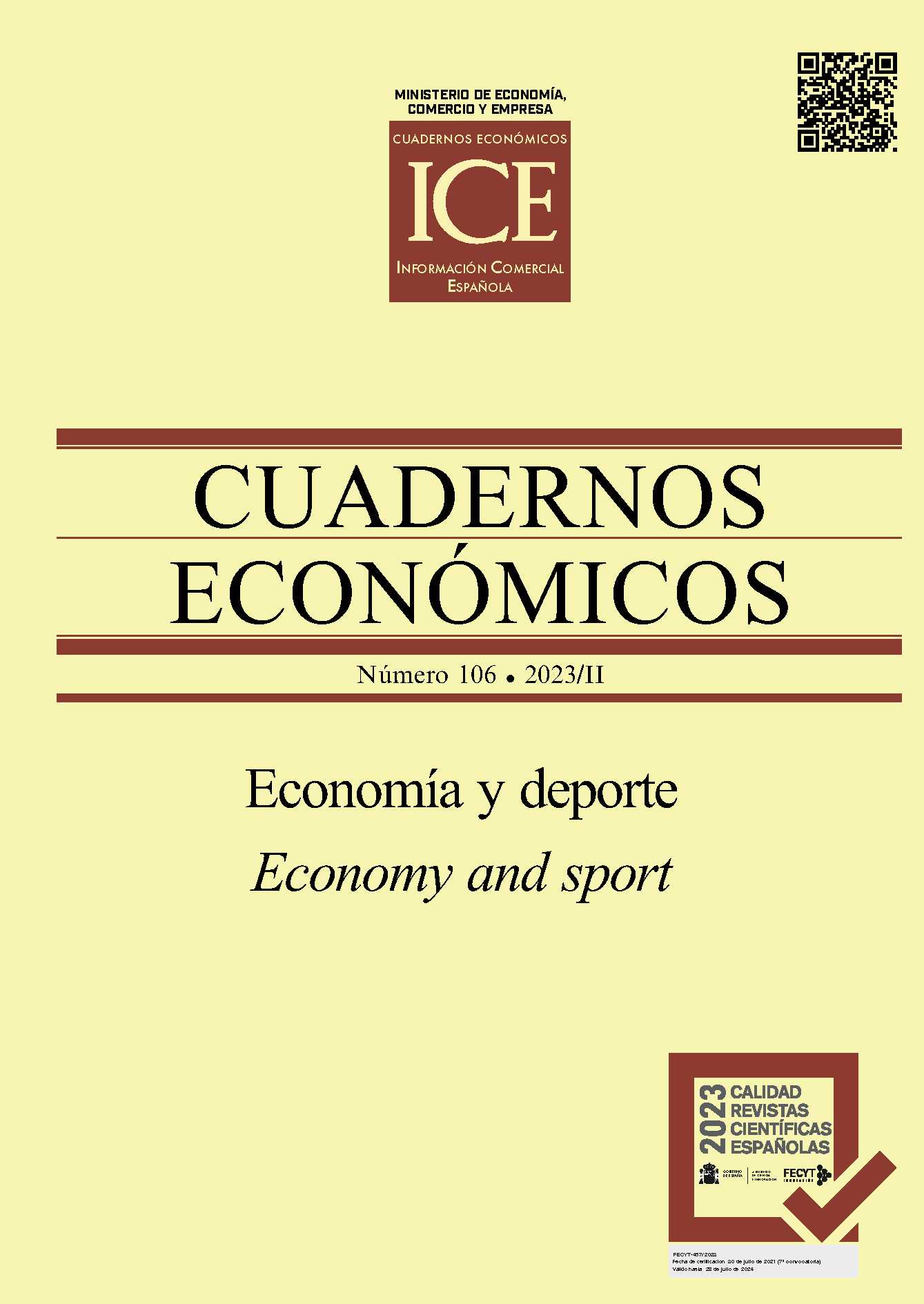Strategy and Growth in LaLiga and the Premier League in the 20/21 and 21/22 seasons
##plugins.themes.bootstrap3.article.sidebar##
Downloads
The work addresses the relationship between the game system, as a manifestation of
competitive strategy, and the results in sports competition, viewed through the lens of
growth analysis in LaLiga and the Premier League for the 20/21 and 21/22 seasons. The
analysis is rooted in the study of game systems and their impact on growth. The methodology
employs strategic analysis that diagnoses the strategy of agents based on their growth
values, juxtaposed against industry benchmarks. The diagnosis is linked with game systems and efficient resource management to pinpoint the drivers of outcomes. Notable strategic
discrepancies are observed in the growth variable values across competitions.
##plugins.themes.bootstrap3.article.details##
Bain, J.S. (1956) Advantages of the large firm: production, distribution, and sales promotion.
Journal of Marketing, 20(4), 336-346. https://doi.org/10.1177/002224295602000402
Bijon, C. (1974). Practique des stratégies de l’entreprise. Expériences de prospective appliquée.
Hommes et Techniques.
Borooah, V. K., & Mangan, J. (2012). Measuring competitive balance in sports using generalized
entropy with an application to English premier league football. Applied Economics,
(9), 1093-1102. https://doi.org/10.1080/00036846.2010.537638
Buraimo, B., Forrest, D., & Simmons, R. (2007). Freedom of entry, market size, and competitive
outcome: Evidence from English soccer. Southern Economic Journal, 74(1),
-213.. https:// doi.org/10.1002/j.2325-8012.2007.tb00834.x
Buzzell, R. D. (1981). Are there “natural” market structures? Journal of Marketing, 45(1),
-51.https://doi.org/10.1177/002224298104500105
Cabral, L. (2017) Introduction on Industrial Organization. The MIT Press.
Dobson, S., & Goddard, J. (2004). Revenue divergence and competitive balance in a divisional
sports league. Scottish Journal of Political Economy, 51(3), 359-376.https://doi.
org/10.1111/j.0036-9292.2004.00310.x
El-Hodiri, M., & Quirk, J. (1971). An economic model of a professional sports league.
Journal of Political Economy, 79(6), 1302-1319.
Espar, F., y Gerona, T. (2004). Elementos para el diseño de tareas del entrenamiento en los
deportes de equipo. Master profesional en alto rendimiento deportes de equipo.
Hay, D. A., & Morris, D. J. (1991). Industrial economics and organization: theory and
evidence. Oxford University Press, USA.
Higgins, R.C. (1977) How much growth can a firm afford? Financial Management, 6(3), 7-16.
Ijiri, Y., & Simon, H. A. (1964). Business firm growth and size. The American Economic
Review, 54(2), 77-89.
Lee, Y. H., & Fort, R. (2012). Competitive balance: time series lessons from the English
Premier League. Scott. Journal of Political Economy 59(3), 266-282. https://doi.
org/10.1111/j.1467-9485.2012.00580.x
Markowitz H. (1952). Portfolio Selection. The Journal of Finance, 7(1), 77-91.
Mason, E. (1939). Price and production policies of large-scale enterprise. The American
Economic Review, 29(1), 61-74. http://www.jstor.org/stable/1806955
Mason, E., (1949). Various views on the monopoly problem: Introduction. The Review of
Economics and Statistics, 31(2), 104-106. https://doi.org/10.2307/1927857
Michie, J. & Oughton, C. (2004). Competitive balance in football: Trends and effects. Football
Governance Research Centre. London.
Pawlowski, T., Breuer, C., & Hovemann, A. (2010). Top clubs’ performance and the competitive
situation in European domestic football competitions. Journal of Sports Economics,
(2), 186-202.https://doi.org/10.1177/1527002510363100
Quirk, J. & Fort, R.D. (1997). Pay dirt: The business of professional team sports. Princeton
University Press.
Sharpe, W. (1964) Capital asset prices: A theory of market equilibrium under conditions of
risk, Journal of Finance, 19(3), 425-442.
Szymanski, S. (2015). Money and Football: A Soccernomics Guide: Why Chievo Verona,
Unterhaching, and Scunthorpe United Will Never Win the Champions League, Why
Manchester City, Roma, and Paris St. Germain Can, and Why Real Madrid, Bayern
Munich, and Manchester United Cannot Be Stopped. Bold Type Books.
Szymanski, S. (2019). Dominio y apuros. Papeles de Economía Española, 159, 92-108.


